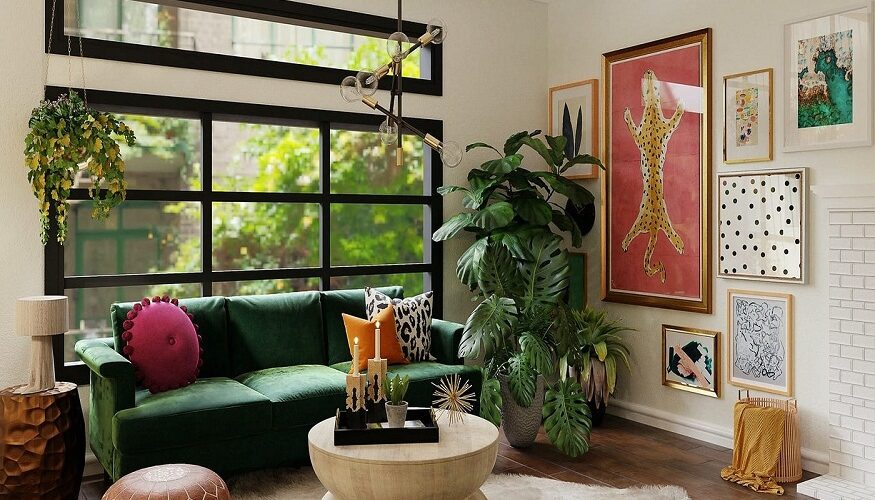General News Blog
My WordPress Blog
My WordPress Blog

Ever entered a room and it felt like a dream? Or the space that soothed your soul? The answer lies not in plush furniture or brilliant lighting but in the room colour whispering from your walls. Yes, the psychology of interior wall painting can be a strong aspect. It has the potential to manipulate mood, emotion, and even behaviour. Your choices in interior wall painting colours can bring serenity, stimulation, cosiness, or transition to your place.
Understanding the psychology of wall colours and how they interact with various designs is very important in bringing out an environment that really would feel like home.
Colour Psychology: The Science Behind
Colours truly affect our psychologies in such deep ways as our brains recognize and interpret different wavelengths of light. For instance, red carries the largest wavelength and is considered to be stimulating, passionate, and active. While colours toward the blue end have a shorter wavelength, they are generally classed as calming and relaxing.
This basic connection between colour and emotion means that the colours you use for your interior wall painting are more than just decorative choices but are psychological cues to direct your everyday experience. That’s why some rooms make you feel more relaxed, whereas others may energize or inspire.
Let’s explorin some common colours and their psychological effects.
Blues and greens are colour palettes often associated with nature, inherently calming and peaceful. They are perfect colours for a bedroom and even for a bathroom. Soft blue can evoke feelings of serenity and peace, recommended for a master bedroom where you need to create a soothing retreat. Green is believed to represent balance and renewal and often works out well in a room space where one is seeking harmony, such as a living room or home office.
Light blue on the walls, for instance, paired with navy elements, can give off an atmosphere of serenity periodically laced with elegance. Go through the paints shade card to make sure you have the right combination to create this effect.
Warm colours, especially red, orange, and yellow, are stimulating in nature. Colours in this range will give you a feeling of warmth, and comfort, and could even generate excitement. The best places to put them in your house are those highly social areas like the kitchen and dining room.
Traditionally used, red is bold and can be strategically used in wall colour paint design to bring energy and vibrancy into the space. However, it is important to balance this out with a non-conflicting neutral tone or soft shade to not overpower the room. The colour orange is correlated with creativity and enthusiasm; it can be great for spaces where you want to inspire activity, like a playroom or your home gym. Yellow, being of a vibrant and uplifting nature, is best for lively places like the kitchen or living space.
The colours that have withstood the test of time in wall paint are neutrals—beige, grey, and white. Neutrals offer a versatile background to be combined with other styles and decors in both modern and minimalist designs. In addition, you must not underestimate how neutrals can definitely set the mood.
An example is white, typically linked with simplicity and purity. It can make a room look wide and airy, which makes it perfect for small rooms or rooms devoid of natural light. Another colour is grey, a very flexible shade that oozes peacefulness and relaxation when paired with other cooler or warmer tones. Remember, the magic of neutrals is in the layering of shades and textures, to create interest and depth in your space.
Richer blues, such as navy, charcoal, and even black, dramatically fill a room with sophistication. They’re considered rich and timeless colours and are applied to formal spaces, such as a dining room or home library, to make a statement.
However, think before you choose dark colours on the inside of the walls. They will beautify, but at the same time, can make a room that looks and feels smaller. But you can lighten the space with lighter furniture, artwork, or accessories to create continuity and visual interest.
When you decide on your general wall colour paint design from the paints shade card, you must consider some ways it would work with other colours. Select colours that transition from one room to another. But if you select bold colours, you can balance them with neutral shades in adjacent spaces.
Another option is to do it on just one wall. An accent wall can pop colour and give a sense of fun without overwhelming the space with it.
The interior wall colours you choose reflect your personality; they can go a long way to express how you feel in your home. Use the meaning attached to each colour to give life to your space. Your home should be a place where you feel truly comfortable and the right colours can make all the difference.